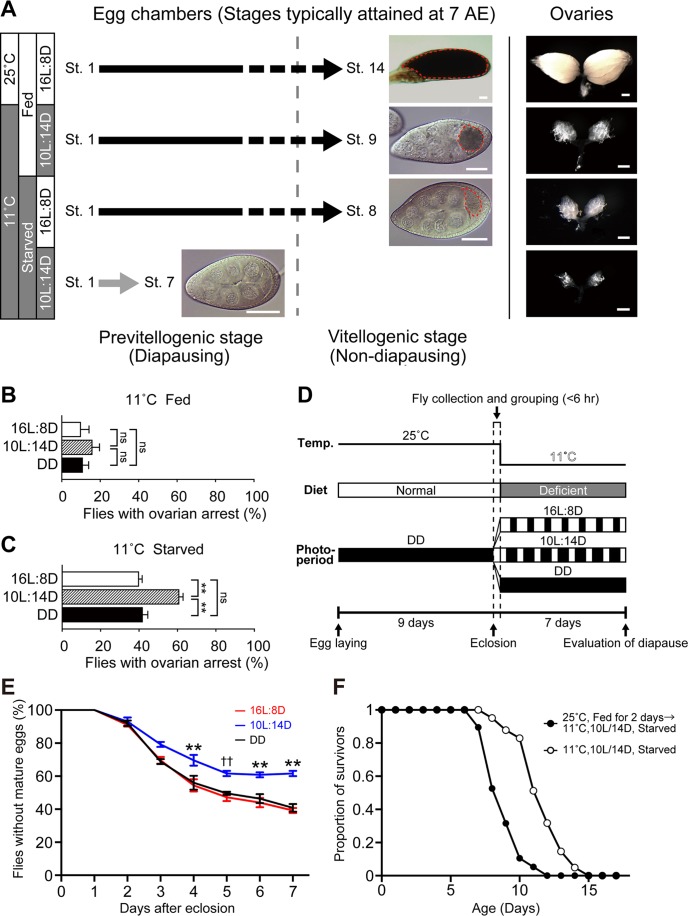Fig 1. Reproductive dormancy is enhanced by the combination of low temperature, short-day photoperiod and nutritional deficiency.
(A) A diagram showing the progression of ovarian development in 7-day-old w1118 flies exposed to four different rearing conditions (indicated at the far left-hand side) after eclosion. The majority of the oldest egg chambers in a paired ovary are at stage-14 (St. 14) under 16L:8D/25°C/ad lib feeding conditions (top), St. 9 under 10L:14D/11°C/ad lib feeding conditions (second to the top), St. 8 under 16L:8D/11°C/starved conditions (second to the bottom) or St. 7 under 10L:14D/11°C/starved conditions (bottom). Typical egg chambers and ovaries in flies kept under the indicated conditions are depicted in the right-hand side panels. The vertical broken line separates the previtellogenic (left of the line) and vitellogenic stages (right of the line). Scale bars: 30 μm (left-hand side panels) and 500 μm (right-hand side panels). Yolks are encircled by broken red lines. (B and C) The proportion of flies with ovarian arrest at 11°C in w1118 flies fed a normal diet (B) and those starved (C) under 16L:8D, 10L:14D and DD conditions. The means ± SEM are shown. ns, no significance; **P<0.01 by the two-tailed Fisher’s exact test (see S1 Table for numerical data). (D) Diagram showing the experimental procedure for evaluating reproductive dormancy. The experimental design shown here was adopted for all experiments. Light illumination (~620 lux) of shorter than ~5 min in duration was applied 2–3 times during the pupal stage to check the developmental status, and when necessary, the temperature was down-shifted to 15°C for 2–3 days to synchronize the emergence of flies from different batches of pupae. The animals were maintained under the constant darkness (DD) until eclosion, because DD is unlikely to prime flies to exhibit arrested vitellogenesis at the adult stage. (E) Time course of egg maturation after eclosion. The proportion of flies carrying egg chambers containing at least one egg with a yolk (ordinate, %) is plotted as a function of time after eclosion (abscissa, days) in flies kept at 11°C with the nutrient-deficient medium under three different photoperiodic conditions after eclosion. ** indicates that the difference is statistically significant at P<0.01 when the value for 10L:14D is compared to that for DD and that for 16L:8D by the two-tailed Fisher’s exact test. †† indicates that the difference is statistically significant at P<0.01 when the value for 10L:14D is compared to that for 16L:8D but not to that DD. The number of flies examined was 100 for Day 0 to Day 2 and 125 for Day 3 to Day 7 (see S1 Table for numerical data). (F) Feeding and temperature conditions immediately after eclosion affect adult lifespan. Shown are the survival curve constructed for female flies kept under the dormancy-inducing conditions throughout the adult stage (open circles) and that of female flies which were fed at 25°C for two days after eclosion and then kept under the dormancy-inducing conditions (filled circles). The number of flies examined was 42 (open circles) and 20 (filled circles). The mean (M) and median (m) lifespan data for control (M: 8.9 days; m: 9 days) and test (M: 11.7 days; m: 12 days) groups were used to estimate the statistical significance of the two groups by the log-rank test (P<0.0001) (see S1 Table for numerical data).

